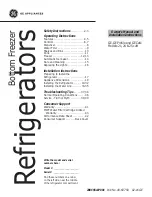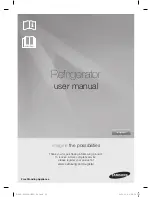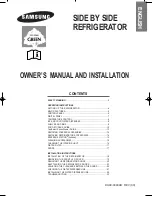
Storing food correctly
Store food covered or packaged. This
will prevent food smells or tastes from
affecting other foods and prevent food
from drying out. The growth of bacteria,
such as salmonella, can be avoided by
setting the correct temperature and
maintaining good standards of hygiene.
Fruit and vegetables
Fruit and vegetables can be stored
loose in the vegetable containers.
However, you should bear in mind that
some types of vegetables give off a
natural gas which speeds up the rate at
which food perishes. Some fruit and
vegetables react strongly to this gas
and should not be stored together in
the vegetable containers.
Examples of fruit which produce a
large amount of this natural gas are:
Apples, apricots, pears, nectarines,
peaches, plums, avocado pears and
figs.
Examples of fruit and vegetables
which react strongly to the natural
gases given off by other types of fruit
and vegetables are:
Kiwis, broccoli, cauliflower, brussels
sprouts, mangos, honeydew melons,
apples, apricots, cucumbers, tomatoes,
pears, nectarines and peaches.
Energy saving tips
– Frequently opening the door or
keeping it open for too long will
cause the temperature in the
appliance to rise. The appliance will
have to run more often in order to
maintain the cool temperature inside
the appliance. Only open the door
when you need to and then only for
as long as necessary.
– If you organise where you store your
food correctly you should be able to
find things quickly and easily without
allowing the temperature in the
appliance to rise. Sort the food out
carefully before putting it into the
appliance.
– Hot food and drinks must be cooled
to room temperature before placing
them in the appliance.
– Do not store groceries too close to
each other. Space should be left
between individual items for air to
circulate.
Using the refrigerator section efficiently
21
Summary of Contents for KF 7654 SNE ed
Page 47: ...47 ...
















































